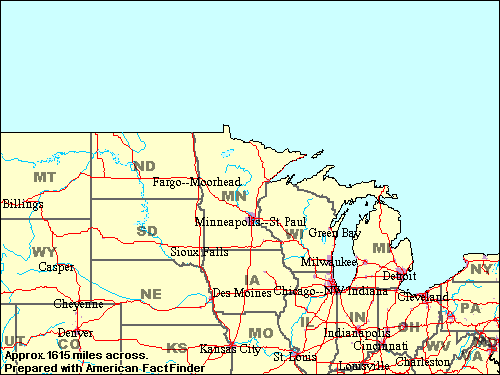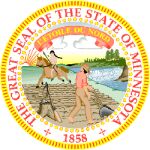|
||
 |
||
|
Minnesota, the "North Star State
Abbreviation: MN |
||
|
Minnesota's name comes from the Dakota (Sioux) word for the Minnesota River's "sky-tinted waters." In 1858, Minnesota became the 32nd state. Minnesota is an important producer of agricultural and manufactured goods. The state's history is the story of the development of its natural resources. The fur-bearing animals of the forests first attracted fur traders. Next, the fertile soil brought farmers, who poured into the region from the Eastern States and from Europe. The thick forests of tall pines attracted lumberjacks from Maine, Michigan and Wisconsin. Minnesota's scenic beauty, sparkling lakes and deep pine woods make it a vacation wonderland. Campers, canoeists and hikers can explore its vast northern wilderness areas. GOVERNMENT Population (July 2001): 4,984,535; National Rank: 21; Percent change since April 2000: 1.1% Land Area: 79,617 sq mi. (206,207 sq km); National Rank: 12 10 largest cities (2000): Minneapolis, 382,618; St. Paul, 287,151; Duluth, 86,918; Rochester, 85,806; Bloomington, 85,172; Brooklyn Park, 67,338; Plymouth, 65,894; Eagan, 63,557; Coon Rapids, 61,607; Burnsville, 60,220 ECONOMY |
|
DISCLAIMER Any reference obtained from this server to a specific commercial product, process, or service does not constitute or imply an endorsement by the United States Government of the product, process, or service, or its producer or provider. The views and opinions expressed in any referenced document do not necessarily state or reflect those of the United States Government. |
|
U.S. Diplomatic Mission to Germany
/Public Affairs/ Information Resource Centers Updated: February 2004 |

